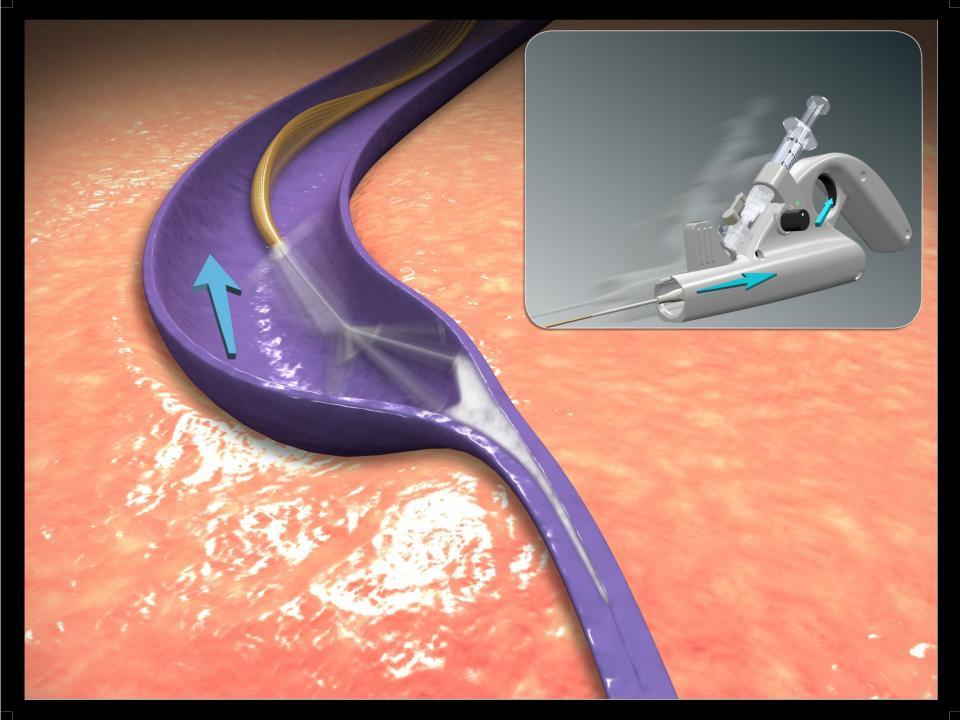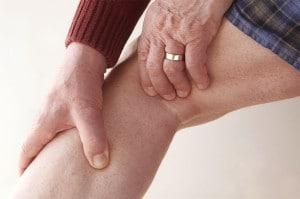Venous Stasis Dermatitis is a Result of Venous Hypertension in the Legs Venous stasis dermatitis is a manifestation of advanced vein disease that affects the skin in the lower leg. It is commonly misdiagnosed with patients potentially going years without identification of the true cause; underlying vein disease. Venous stasis dermatitis is a result of venous hypertension in the legs. … Continue reading Venous Stasis Dermatitis
Superficial Phlebitis and Acute Thrombophlebitis
What Is Phlebitis? Up to a fourth of all patients with varicose veins and lower extremity venous insufficiency will have an episode of clotting of a varicosity. This can be nearly invisible or can be located just underneath the skin. This condition is called acute superficial thrombophlebitis. The condition causes pain and discomfort but is usually self-limiting. It should, however, be … Continue reading Superficial Phlebitis and Acute Thrombophlebitis
Leg Cramping
Leg Cramping is a Common Symptom of Venous Disease An extremely common symptom of venous disease in the legs is cramping. Cramping is most often worse at night, or after a long day of sitting or standing. The cramping sensation is often an indication that fluid is accumulating during the day due to increased venous … Continue reading Leg Cramping
Conservative Treatment
Non-invasive Vein Treatment Option Conservative treatment refers to non-invasive options such as lifestyle changes (eating less, exercising more, losing weight, etc.) and wearing compression stockings. The objective of the conservative approach is to support the venous circulation of the legs in order to minimize symptoms and slow the development of new diseased veins. This treatment … Continue reading Conservative Treatment
ClariVein Treatment (Mechanochemical)
Introduction Treatment of Venous Incompetence Precision is proud to be one of the few centers in DFW to have been able to use this state-of-the-art technology. This new device is a treatment utilizing endovenous treatment (treatment inside the vein), in conjunction with chemical ablation. It also employs a new approach, that of mechanical ablation, hence the term … Continue reading ClariVein Treatment (Mechanochemical)
Thrombolysis
A Solution for Blood Clots Precision specializes in the diagnosis and treatment of blood clots within both the deep and superficial venous system. Blood clots often cause pain and swelling of the affected limb and can be a life-threatening condition. Blood clots rarely dissolve completely on their own and can often lead to permanent damage of … Continue reading Thrombolysis
Aching Leg Pain | Pain in Legs
Aching Leg Pain Can Be a Symptom of Lower Extremity Venous Disease A common symptom of lower extremity venous disease is a dull, heavy ache in the legs. Frequently, the pain is worse in the evenings particularly after a day of sitting or standing.If you feel you may be struggling with venous disease of the legs, … Continue reading Aching Leg Pain | Pain in Legs
PoTS: The Most Common Medical Condition You’ve Never Heard Of
Is Your Physician in the Know? Postural Orthostatic Tachycardia Syndrome or PoTS, is one tough condition, not just for the patients, but for the physicians as well. While thankfully it doesn’t kill, it can quite often make you feel like your life is being held hostage. It can be a condition on its own or a comorbidity of … Continue reading PoTS: The Most Common Medical Condition You’ve Never Heard Of
Common Symptoms
Symptoms of Lower Extremity Venous Insufficiency Symptoms of lower extremity venous insufficiency can range from minor cosmetic issues to a serious medically disabling condition. Not all symptoms match the outward appearance and vice versa. It is possible to have significant vein disease without symptoms, or to have symptoms but no outward manifestations such as spider … Continue reading Common Symptoms
Tunneled Central Venous Catheter Placement
Overview Long-term venous access is of critical importance to a wide group of patients. This is achieved by inserting tunneled lines via the internal jugular vein or the subclavian vein. This can be done either surgically or percutaneously. Combined use of ultrasonographically guided vein puncture and fluoroscopy has significantly reduced the complications related to insertion. … Continue reading Tunneled Central Venous Catheter Placement









